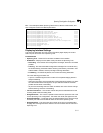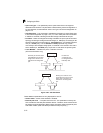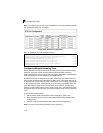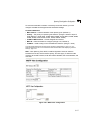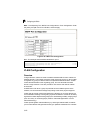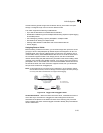
Configuring the Switch
3-116
3
Web – Click Spanning Tree, STA, Port Configuration or Trunk Configuration. Modify
the required attributes, then click Apply.
Figure 3-66. STA Port Configuration
CLI – This example sets STA attributes for port 7.
Configuring Multiple Spanning Trees
MSTP generates a unique spanning tree for each instance. This provides multiple
pathways across the network, thereby balancing the traffic load, preventing
wide-scale disruption when a bridge node in a single instance fails, and allowing for
faster convergence of a new topology for the failed instance.
By default all VLANs are assigned to the Internal Spanning Tree (MST Instance 0)
that connects all bridges and LANs within the MST region. This switch supports up
to 32 instances. You should try to group VLANs which cover the same general area
of your network. However, remember that you must configure all bridges within the
same MSTI Region (page 3-109) with the same set of instances, and the same
instance (on each bridge) with the same set of VLANs. Also, note that RSTP treats
each MSTI region as a single node, connecting all regions to the Common Spanning
Tree.
To use multiple spanning trees:
1. Set the spanning tree type to MSTP (STA Configuration, page 3-107).
2. Enter the spanning tree priority for the selected MST instance (MSTP VLAN
Configuration).
3. Add the VLANs that will share this MSTI (MSTP VLAN Configuration).
Note:
All VLANs are automatically added to the IST (Instance 0).
Console(config)#interface ethernet 1/7 4-130
Console(config-if)#no no spanning-tree spanning-disabled 4-171
Console(config-if)#spanning-tree port-priority 0 4-172
Console(config-if)#spanning-tree cost 50 4-171
Console(config-if)#spanning-tree link-type auto 4-174
Console(config-if)#no spanning-tree edge-port 4-172
Console(config-if)#spanning-tree protocol-migration 4-176
Console(config-if)#






